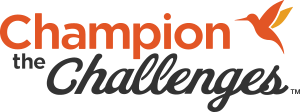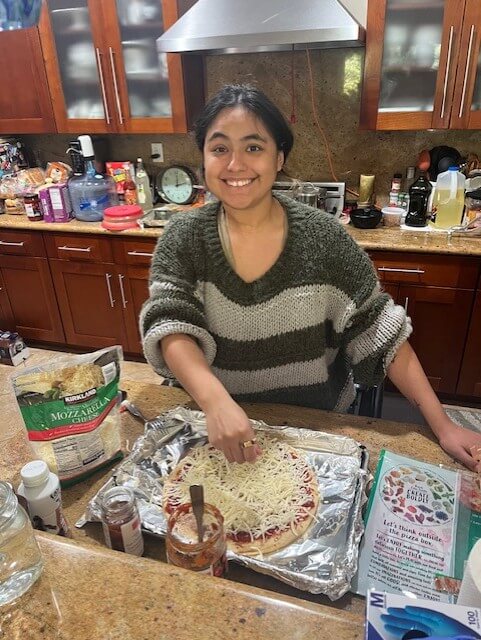
TYPE OF STROKE: ISCHEMIC
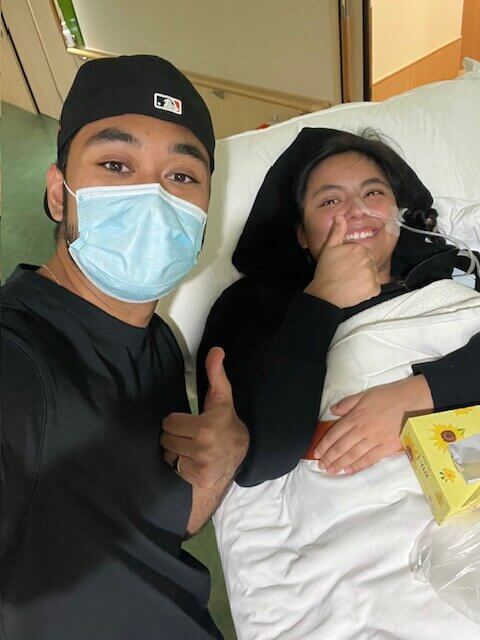 While in Tokyo, Japan, for the second part of our honeymoon, I experienced a life-changing event on January 14, 2024. I woke up in our Hilton Hotel room feeling very strange and became uncontrollably sick. My husband JP and I initially thought it was just food poisoning or a stomach bug. However, as a professional ER Nurse in California, I knew something was wrong, and it was getting more serious when my dizziness, lack of mobility, and tinging on my left side wouldn’t go away. JP quickly called the front desk, alerting them to the emergency, and the hotel staff sprang into action. The hotel personnel arrived at our room within moments and immediately contacted the local emergency unit. While the emergency team was on their way to the hotel, I started to get a very severe headache, and the room was spinning. The pain was behind my right eye, and for someone who can tolerate a lot of pain, this had me screaming in agony that something was wrong and that this was not just a stomach bug. The local emergency team arrived at our room and quickly took me to the hospital.
While in Tokyo, Japan, for the second part of our honeymoon, I experienced a life-changing event on January 14, 2024. I woke up in our Hilton Hotel room feeling very strange and became uncontrollably sick. My husband JP and I initially thought it was just food poisoning or a stomach bug. However, as a professional ER Nurse in California, I knew something was wrong, and it was getting more serious when my dizziness, lack of mobility, and tinging on my left side wouldn’t go away. JP quickly called the front desk, alerting them to the emergency, and the hotel staff sprang into action. The hotel personnel arrived at our room within moments and immediately contacted the local emergency unit. While the emergency team was on their way to the hotel, I started to get a very severe headache, and the room was spinning. The pain was behind my right eye, and for someone who can tolerate a lot of pain, this had me screaming in agony that something was wrong and that this was not just a stomach bug. The local emergency team arrived at our room and quickly took me to the hospital.
Here we are in the middle of Tokyo in a hospital ER. This wasn’t a sightseeing stop we had planned when booking our trip. However, the entire staff would become a memorable part of this life-changing event. Thank goodness for technology, as JP and I used a couple of smartphone apps as our local translators. After a series of tests, they said it appeared to be a case of gastritis, and they were preparing the paperwork, medicines, and discharge plans for me to go back to the hotel for rest and recovery. JP quickly emphasized that I had a severe headache behind my right eye, and they needed to look at my head. They kept being hesitant about doing any more tests. As a professional PT (Physical Therapist) working with stroke and rehabilitation patients, JP continued to push for more tests, and he wouldn’t let them release me without determining why my headaches were so severe. I didn’t seem to be improving, and my mobility was getting worse, yet I was still able to ask questions and communicate with them. The medical staff also were concerned that we did not have travel insurance and were unsure that our medical plan would be accepted in Japan. Due to this uncertainty, they were extra hesitant to approve the next set of tests. JP was amazing at navigating through this very confusing and stressful situation and ensured the hospital staff that we would personally cover all the charges for the CT scans and MRI, which would be the next steps to see what might be causing the headaches. The CT scan returned negative, with nothing that appeared to be a reason for the headaches. After several conversations and pushback, they agreed to perform an MRI, and we waited anxiously for the results. Then, the moment came when the MRI revealed I had a stroke, and you could see the detachment. A team ran into my room and immediately decided I needed to be transferred a short distance to Tokyo Women’s University Hospital (TWUH), the closest hospital with an on-staff neurologist. JP immediately arranged for his mom and sister to fly to Tokyo to be with him during this time.
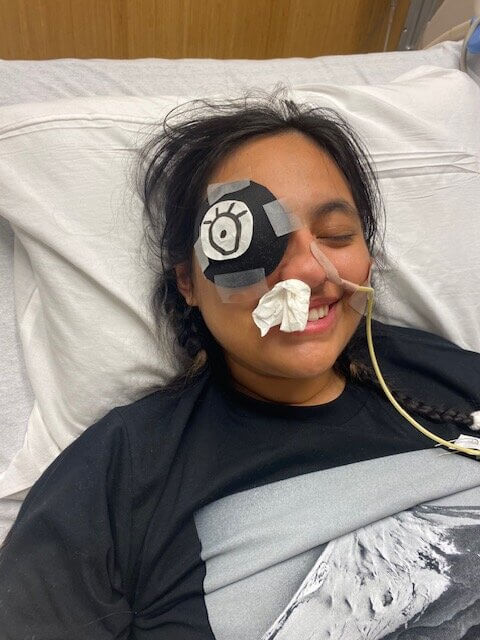 I was in the ICU at TWUH for 11 days with no visitation allowed. JP was able to convince the neurologist to arrange a one-time visit with me the first day I arrived but this was the last time I saw him until finally being transferred to the general ward. This visit is still emotional for me to talk about it, as I remember how scared he was when he came into the ICU room. A few days later, my parents flew to Japan with the help of my younger brother, who works for United Airlines. Despite them coming halfway across the world, they were never given permission to see me in person. I could only talk with them on the phone and via Facetime. Family friends came from the Philippines to help us with critical translation with hospital staff. I felt so much love and comfort that everyone was focused on helping and being with me. My doctor was incredible and was one of the only people who spoke some English, so JP could get updates and text or call with critical questions. I was first moved from the ICU to an isolation room as I started to get more stable. Finally, on day 12, I was moved to the general ward where I was granted 20 minutes of visitation per day. JP and my family were finally able to see me (2 visitors per day). They helped me exercise my hands and legs, gave me massages, and set up small stationery exercises. The conversations switched to getting me home and how that process would work. The hospital didn’t start me on aggressive therapy as we typically would in the United States (US), but instead, were focused on me sitting upright in a wheelchair for up to 2 hours at a time as this was required for takeoff and landing. The hospital gave JP a number to the US Embassy for medical transfer information which unfortunately was unhelpful. I am thankful for American Express (AMEX), who assisted us and gathered all the information needed for a safe transfer back to the US.
I was in the ICU at TWUH for 11 days with no visitation allowed. JP was able to convince the neurologist to arrange a one-time visit with me the first day I arrived but this was the last time I saw him until finally being transferred to the general ward. This visit is still emotional for me to talk about it, as I remember how scared he was when he came into the ICU room. A few days later, my parents flew to Japan with the help of my younger brother, who works for United Airlines. Despite them coming halfway across the world, they were never given permission to see me in person. I could only talk with them on the phone and via Facetime. Family friends came from the Philippines to help us with critical translation with hospital staff. I felt so much love and comfort that everyone was focused on helping and being with me. My doctor was incredible and was one of the only people who spoke some English, so JP could get updates and text or call with critical questions. I was first moved from the ICU to an isolation room as I started to get more stable. Finally, on day 12, I was moved to the general ward where I was granted 20 minutes of visitation per day. JP and my family were finally able to see me (2 visitors per day). They helped me exercise my hands and legs, gave me massages, and set up small stationery exercises. The conversations switched to getting me home and how that process would work. The hospital didn’t start me on aggressive therapy as we typically would in the United States (US), but instead, were focused on me sitting upright in a wheelchair for up to 2 hours at a time as this was required for takeoff and landing. The hospital gave JP a number to the US Embassy for medical transfer information which unfortunately was unhelpful. I am thankful for American Express (AMEX), who assisted us and gathered all the information needed for a safe transfer back to the US.
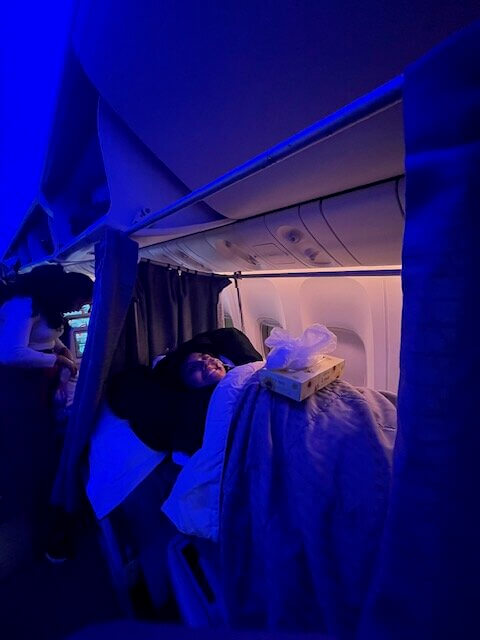
AMEX handled everything including setting up an Emirates Airline Medical Flight. It was a 30-hour flight routed through Dubai because no airline that flies directly from Tokyo to SFO offered Medical Evacuation flights. I was accompanied by two flight nurses and JP right by my side. They transferred me on a gurney, which I was in for the whole 30 hours. I didn’t end up having to sit up once. The doctors, ER nurses, and the entire team from TWUH hugged me before I left after 30 days with them. They were amazed with the progress I had made including restoring the ability to move my left hand and lift my left arm over my head. I still had double vision, vertigo, and a nasogastric tube as I couldn’t swallow safely. We arrived at SFO only to discover they didn’t have a gurney, a process of transferring me, and weren’t prepared to receive a medical evacuation. Fortunately, of the over a dozen people that were trying to figure out how to get me out of the airplane, a Fire Marshall helped them safely transfer me using a food and beverage cart tied together with a gait belt — JP was so worried that I would fall, and rightly so. Luckily the Fire Marshall, paramedics, and JP were able to navigate the narrow aisle safely and got me loaded onto an ambulance that was already waiting. We arrived at Santa Clara Valley Medical Center (SCVMC), in San Jose, CA. The team at SCVMC is awesome, the facility is amazing, and they helped me progress. After five weeks of Physical, Occupational, and Speech therapies, I was ready to go home. Their inpatient facility and the caring but aggressive rehabilitation I received improved my healing.
I love my work as an ER nurse and miss it very much. I hope to be back at work someday. People sometimes ask me how I could do that job and handle all the stress of the ER, and I explain it this way. I put on my “nurse goggles” and am instantly transferred into a different world. I become very clinical and put my emotions away for later. This ER attitude and belief has helped me through my stroke journey.
 JP is the love of my life, and he is incredible at navigating us through this life-changing event–I love him so much. I have gotten a second chance at life, and I want to spend time with my family and friends and savor those special moments. JP and I plan to take a long-anticipated trip to Italy next August 2025 with a group of very close friends, all of which are planning to celebrate our 30th birthday together and toast life’s precious moments
JP is the love of my life, and he is incredible at navigating us through this life-changing event–I love him so much. I have gotten a second chance at life, and I want to spend time with my family and friends and savor those special moments. JP and I plan to take a long-anticipated trip to Italy next August 2025 with a group of very close friends, all of which are planning to celebrate our 30th birthday together and toast life’s precious moments
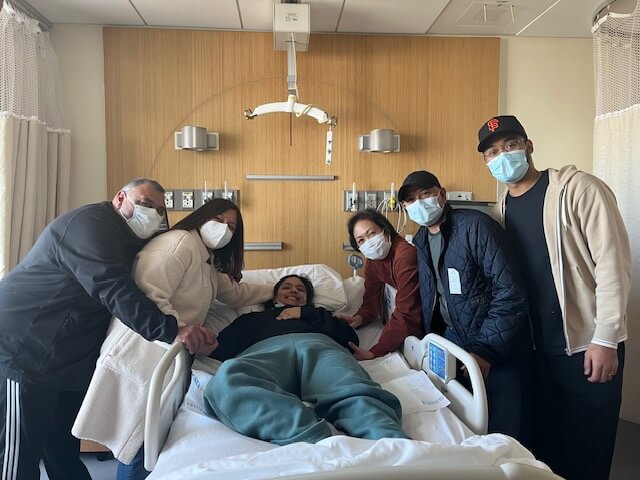
—Carpe diem.
